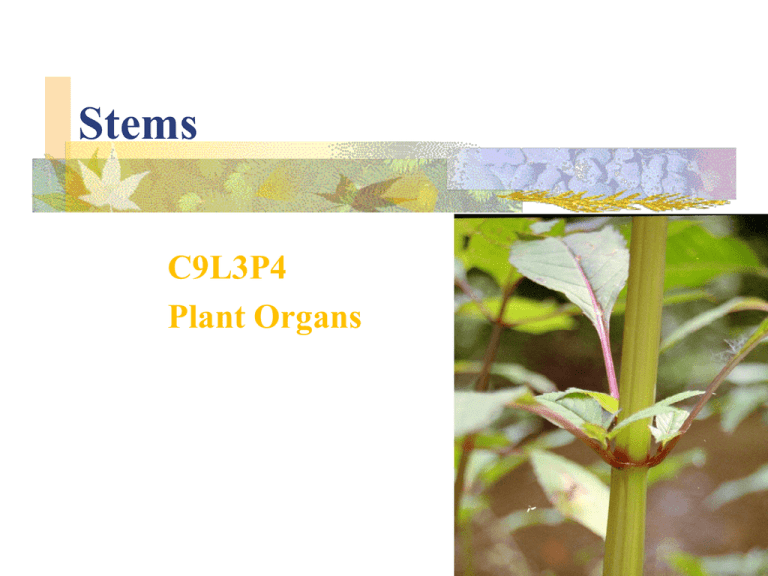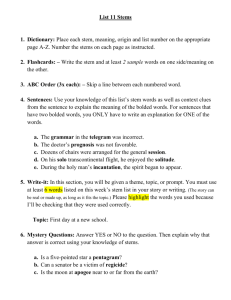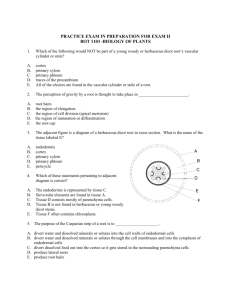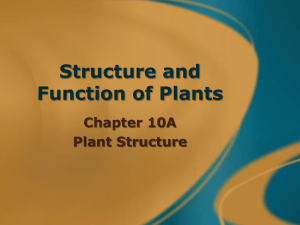Stems C9L3P4 Plant Organs
advertisement

Stems C9L3P4 Plant Organs Stems The part of a plant that connects its roots to its leaves is the stem. Stems support branches and leaves, and their vascular tissues transport water, minerals, and food. Plant stems are usually classified as either herbaceous, which are usually soft and green, or woody, which are stiff and typically not green. Types of stems Herbaceous stems Woody stems Herbaceous stems Softer, more flexible type of stem Supported by cell walls and turgor pressure Woody plants often begin as herbaceous and then become woody as the grow older Woody stems Hard and not very felxible Capable of supporting a lot of weight Examples: trees and shurbs Stem Functions manufacture, support, and display leaves conduct materials Monocot Stem Dicot Stem wood a collection of layers of xylem that have built up over several years The oldest layer of xylem is at the center of the woody plant part newest layer is the outermost layer Kinds of Wood Heartwood - dead xylem cells that are often darker Sapwood - xylem that conduct water and minerals Heartwood & Sapwood Kinds of Wood Springwood - xylem cells that develop early in the growing season Summerwood - small, thickwalled xylem cells that develop later in the growing season Springwood & Summerwood Kinds of Wood Hardwood - comes primarily from angiosperms (oaks, maples, walnut, cherries) Softwood - comes primarily from gymnosperms (firs, pine, cedars, spruce) Hardwood Softwood Heartwood & Sapwood bark the outer covering of woody plant parts(makes new xylem and phloem cells) cork (the outer layer of bark) tough, thick-walled cells forming the outer layer of bark in woody plant stems; made of dead, thick-cell walls cork heartwood Annual growth ring sapwood (xylem) phloem cork vascular cambium forms a tough, water proof coating that keeps harmful organisms out and moisture cork cambium a layer of living cells just under the dead cork (produces new cork cells)







